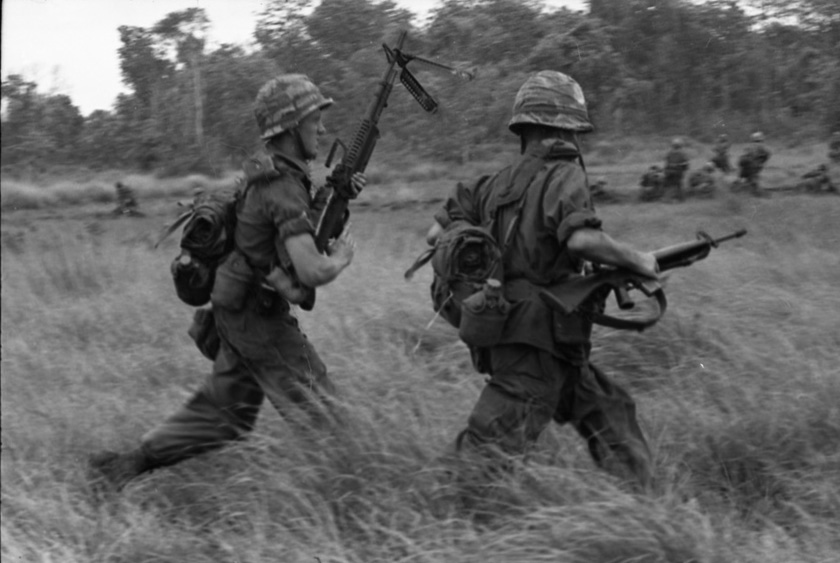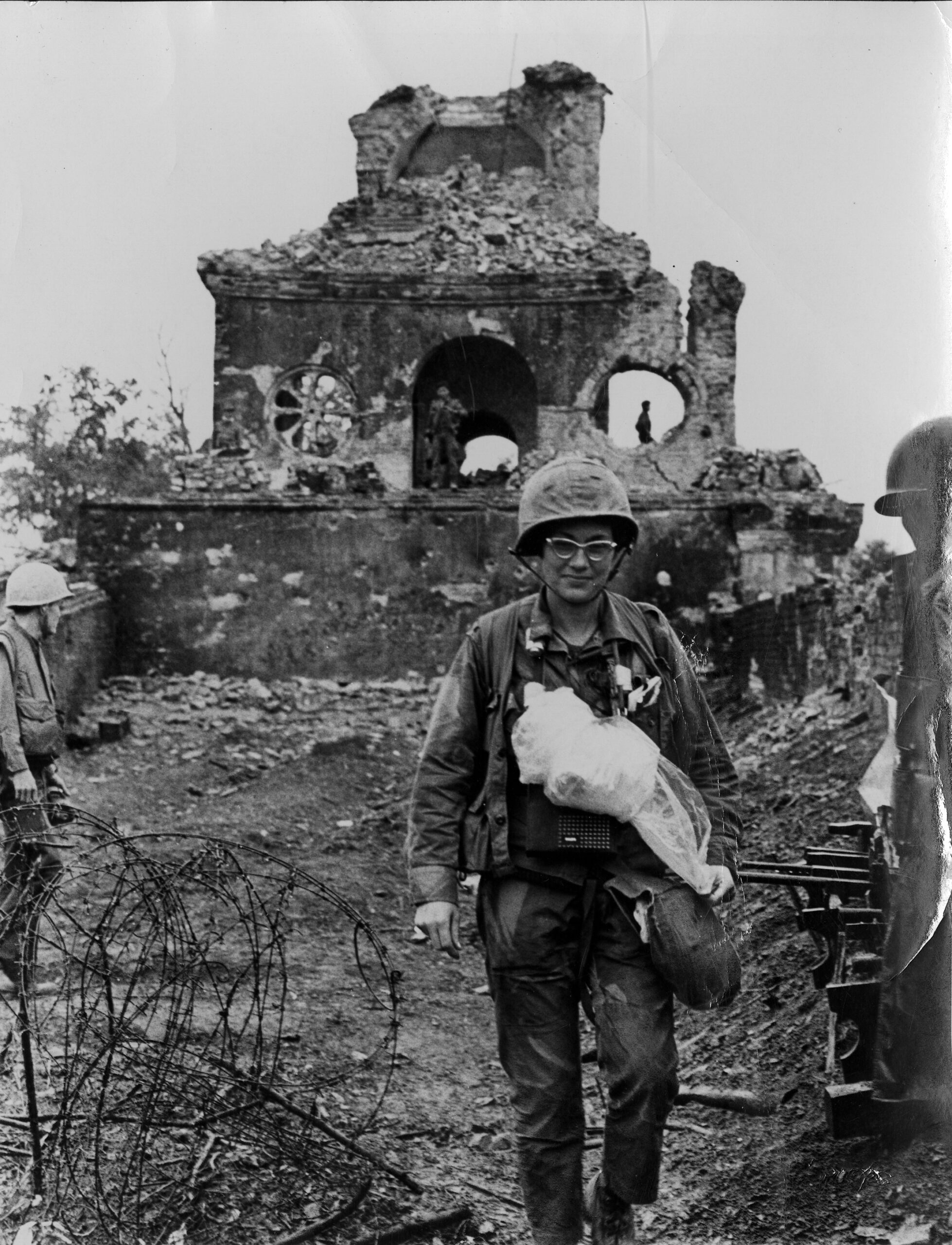Journalism in Action: Beverly Deepe Keever and Her Career
Archives & Special Collections, University of Nebraska-LincolnMajor Military Campaigns
This page provides links to Keever’s articles and photos about military operations in the Vietnam War. Keever left Vietnam in 1968, so even though some of these campaigns last into the early 1970s, her coverage stops in 1968.
Chiêu Hồi Program, 1963-1975
The Chiêu Hồi program was a joint U.S. and South Vietnamese campaign which encouraged North Vietnamese and Việt Cộng defection. The program was plagued with issues, and Keever’s articles are generally critical of the program. By the end of the war, only 100,000 soldiers had defected from the communist side and experts estimate only about 25% of these defections were genuine. Allowing defecting communist soldiers to easily join the allied units may have contributed to infiltration and pilfering of rations.
Read articles here.
Tonkin Gulf Incident, 1964
While the facts of the Tonkin Gulf Incident have been disputed in recent years, it was undoubtedly the event that allowed the U.S. to officially enter the Vietnam War. In August 1964, the USS Maddox reported that it had been fired on by North Vietnamese ships. The USS Maddox had been attempting to spy on the North Vietnamese in the Tonkin Gulf, in what the U.S. considered international waters, but in waters North Vietnam claimed was theirs. North Vietnamese boats appear to have fired warning shots near the Maddox, and the Maddox then returned fire. The only American injured had ruptured eardrums from the Maddox‘s own cannons. Then a few days later the USS Turner Joy also reported it was attacked, though decades later historians showed that actually the ship was trying to communicate about a possible future attack.
President Johnson, who had long wanted to commit American troops to Vietnam, used the underwhelming skirmish as an excuse to enter the war. Claiming that Americans had been attacked unprovoked and that he had to defend American lives in Vietnam, he encouraged Congress to pass the Gulf of Tonkin Resolution, which gave Johnson emergency powers. American troops began arriving in Vietnam in 1965.
Read the articles here.
Operation Long Reach, 1965
Also known as the Pleiku or Pleime Campaign, Operation Long Reach was a joint U.S.-South Vietnamese operation which liberated the Pleime ARVN camp and attacked the North Vietnamese Chu Pong and La Drang bases. The South Vietnamese side was successful.
Read the articles here.
Marine Corps County Fairs, 1965-1966
Marine Corps County Fairs were operations that tried to find Việt Cộng soldiers hiding in South Vietnamese villages. Early in the morning, U.S. Marine corpsmen would wake the village and search every person and question them. Meanwhile, ARVN soldiers searched village homes. Those who passed the inspection were given supplies like soap and rice, while those who were suspected Việt Cộng were arrested.
See the photos here.

Villagers at Marine Corp County Fair, July 1966

Aerial photo of a bombing of Ninh Binh railway, 1966
Aerial Bombing, 1965-1973
Both the U.S. Air Force and the U.S. Navy participated in campaigns to bomb civilians and military bases in North Vietnam. When Keever was in Vietnam, this was largely through the controversial Operation Rolling Thunder (1965-1968), but there were a number of other bombing campaigns throughout the war. Because reporters had limited access to air strike information, most of Keever’s coverage is on South Vietnamese reaction to changes in the campaign.
Read articles here.
See the photos here.
Pacification Program, 1965-1973
The Pacification program was carried out by joint U.S.-South Vietnamese Civil Operations and Revolutionary Development Support (CORDS). The goal of the program was to convince rural South Vietnamese civilians to support the South Vietnamese government. The program focused on protection of villagers by armed patrols and on bettering the lives of villagers through infrastructure development. While the program was popular with the civilian population, it could not make up for the unpopularity of the government, and after the Americans left the war in 1973 the program disintegrated.
See the articles here.
Operation Mastiff, 1966
Operation Mastiff was one of many times that the U.S. tried to engage the North Vietnamese in traditional combat. Intelligence services had found out North Vietnamese forces would be in Dầu Tiếng District, so the U.S. Army 1st Infantry Division quickly moved into the area. However, the North Vietnamese effectively used guerilla tactics to avoid direct combat, and the operation was a failure.
See the photos here.

Operation Mastiff American soldiers, 1966
Tet Offensive, 1968
The major turning point of the war was the Tet Offensive on January 30, 1968. While the US military had been telling the public that victory was close, this image shattered when the North Vietnamese launched a coordinated offensive. North Vietnamese troops attacked major military bases and cities across South Vietnam.
Both sides considered the Tet Offensive a major failure. The North Vietnamese had major casualties and they had hoped the offensive would cause a mass uprising in the civilian population which failed to materialize. For the U.S., Tet turned the tide of public opinion against the war and revealed how the military had been lying about the state of the war.
Read the articles here.

Beverly Keever in Huế, 1968
Battle of Huế, 1968
The Battle of Huế was a major battle within the Tet Offensive. The city of Huế was first captured by the North Vietnamese and Việt Cộng, and then retaken by ARVN and American troops after a long bloody battle. The city was on both a major highway and a river that connected the DMZ with the coast, so it was a strategically important supply route. The North Vietnamese massacred thousands of civilians in Huế, and the months of fighting destroyed the ancient citadel of the city.
Read the articles here.
Battle of Khe Sanh, 1968
The Battle of Khe Sanh saw the US Marine Corps, Army, and Air Force defending Khe Sanh Combat Base from North Vietnamese forces. Historians have argued that the Battle of Khe Sanh distracted the U.S. from preparations for the Tet Offensive.
Read the articles here.
